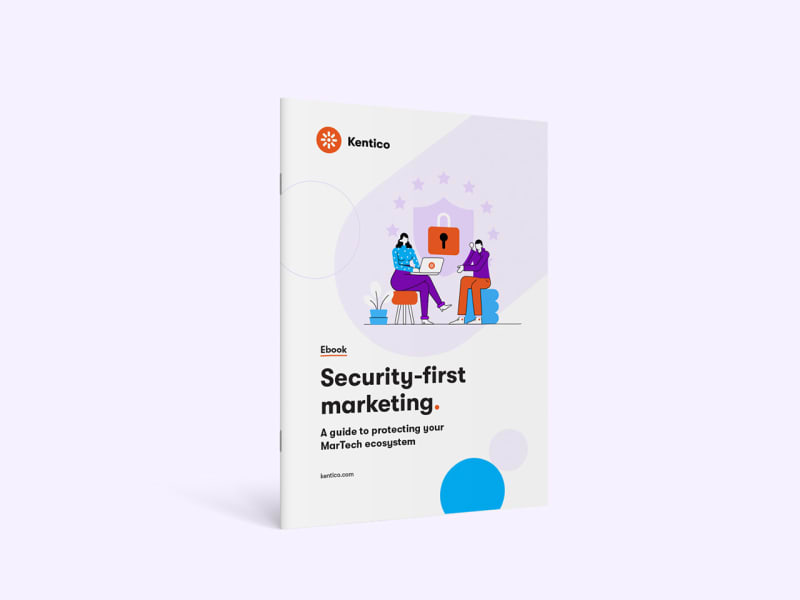Even if you're not tech-savvy, you can still protect your digital system and customer data. In fact, your organization's digital security depends on you more than you might think! Let's explore website security for marketers and how they can prevent issues in their daily digital work.
1. Educate your team on security
Don't play into the hands of hackers. According to Verizon’s 2024 Data Breach Investigations report, 68% of breaches involved the human element. That includes social engineering attacks, errors, or misuse. So, obviously, a well-informed team is the first line of defense against potential threats to effectively secure your website.
Organize training sessions regularly and share security news with your team members. When everyone understands the importance of strong passwords, handles customer data properly, and recognizes phishing attempts, your team acts as castle guards. They create a safer digital space for your organization and customers.
2. Choose strong passwords
Selecting strong passwords for security is something everyone can be mindful of every day. When crafting a strong password, use a combination of uppercase and lowercase letters, numbers, and special characters.
Be creative and don’t use weak, obvious passwords (looking at you, password123). Use a mix of letters and numbers. Don't use obvious information like your dog's name, favorite band, house number, or birth date.
Longer passwords and passphrases are typically more secure. Passphrases are sequences of words or sentences that are easy for you to remember but difficult for others to guess. Remember to be cautious about where you keep your password; it certainly shouldn’t be written on the cover of your notepad.
3. Use double opt-in and reCAPTCHA
You can proactively boost security by implementing double opt-in and reCAPTCHA mechanisms. Double opt-in means sending a confirmation email to new subscribers after they sign up for newsletters or other communications. Recipients must click on a verification link to confirm their subscription. This two-step process ensures that the provided email addresses belong to real people who wish to receive your content.
On the other hand, reCAPTCHA is a widely used tool to protect websites from automated bots and malicious activities. By adding a simple checkbox or a more complex image recognition challenge to your forms, reCAPTCHA verifies that the user is human.
4. Use VPN when connecting to public Wi-Fi
Be careful on public Wi-Fi and use your mobile data or a Virtual Private Network (VPN) when traveling. If you're connecting to open networks you find in cafes or airports, there's a chance that sneaky people might steal sensitive information you're sending between your devices and the websites you visit.
Everyone in your team should avoid accessing confidential information or logging into important accounts while connected to public Wi-Fi. The good news is that a VPN creates something like a secret path between your device and a server, so all the data going back and forth stays safe.

Protect your data even when using the internet in public places.
5. Review user accounts regularly
User accounts can accumulate over time, including those of employees, contractors, and collaborators. Without periodic reviews, inactive or unnecessary accounts might linger, becoming potential entry points for cyber attackers.
Regularly check your website administration and client or partner portals. Also, don’t forget to remove former employees from the admins of your social media accounts.
6. Use generative AI safely
Generative AI, which includes technologies like text and image generation models, is extremely valuable for content creation and design tasks. For all the excitement, it’s easy to forget the correct handling of data privacy.
Our native AI, AIRA, was designed with data privacy in mind. Powered by Azure OpenAI, it ensures your data is never used to train models and remains completely private from other customers. Any other application or feature using Azure OpenAI will follow the same data privacy rules.
If you're unsure how a generative AI model handles data, it's important to check the documentation to make sure you're avoiding any generative AI security risks. AI models require extensive training on the data the users provide, and we must be careful about the information we input. Without appropriate anonymization and consent, you should never feed an AI model with sensitive or personally identifiable data.
7. Don’t share your access with your friends and family
According to a Comparitech article, 50% of workers give friends and family access to their work-issued devices. Careful though. Your work laptop may be the best device in the household for playing online games, but it’s also a door to your company’s secrets.
The unintentional mishandling of data or accidental installation of malware are all potential consequences that can compromise the security and confidentiality of your company assets.
8. Create roles and password-protected areas
Set up clear roles and permissions for different people in your team. This way, only the right people can get their hands on sensitive information and critical functionalities. Get a digital experience platform (DXP) that enables assigning roles to administrators, marketers, and editors within the system.
You can also create a password-protected area or a member portal on your website. This is particularly useful when sharing documents or specific information with clients or business partners. With password protection, marketers control access to their content, keeping it private and limited to the intended audience.
9. Work only with safe technologies
Check each technology partner thoroughly. Ensure your website runs on a DXP with ISO 27001 and SOC 2® Type 2 certificates. When you’re considering a new app or integration, be cautious about granting excessive permissions or access to sensitive data.
Choose providers that offer well-documented APIs and clear security protocols. Regularly review the permissions granted to integration providers and revoke unnecessary access to mitigate potential risks.
Be mindful of security maintenance for third-party tool. They can introduce serious website security risks when they are poorly maintained or lack clear security standards. This is especially true for platforms like WordPress, where outdated or unsecured third-party extensions are one of the most common causes of data breaches and compromised websites.
10. Choose a DXP with frequent updates and top-class support

"Given the fast development in IT, your website can never be 100% safe. But it’s an easier target if it uses obsolete, unsupported software."
Regular updates by the DXP provider should include hotfixes, bug fixes, performance improvements, and new features. Evergreen platforms are a great choice for peace of mind; ensuring your platform is always up to date with the latest security standards.
With every update, you get the latest shield against cyber-attacks, plus new buttons and UX improvements for your everyday work. If you choose a CMS or a DXP that frequently issues small updates, your developers can instantly install every one of them.
Another essential part of website security is reliable support from your technology providers. Support engineers should react promptly to any security issue reported. When you inform them about a critical problem, they should give you a workaround for instant protection and fix the problem as quickly as they can.
Learn more about how marketers should prioritize security with our free ebook, Security-first marketing, a guide to protecting your MarTech ecosystem.


